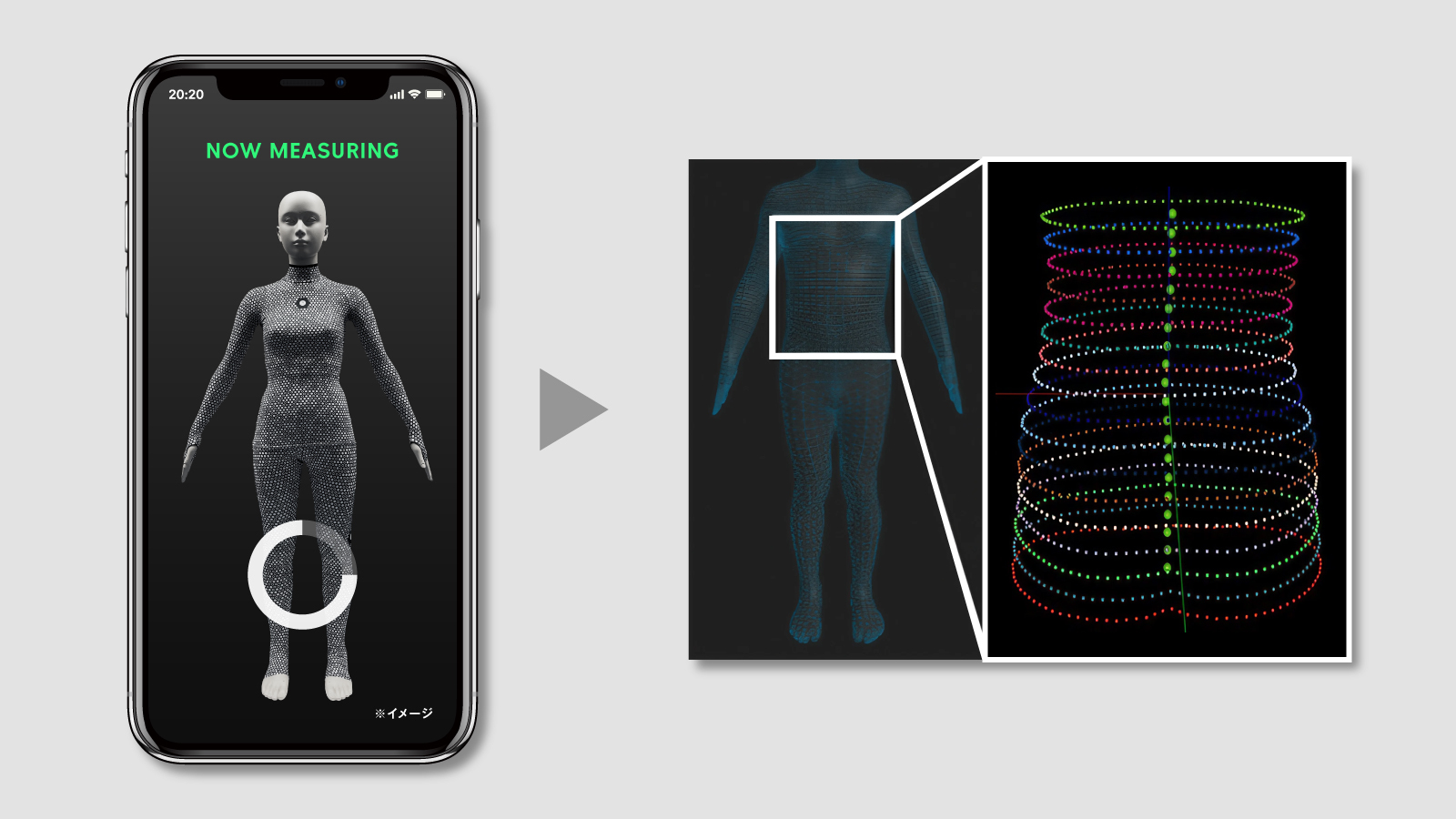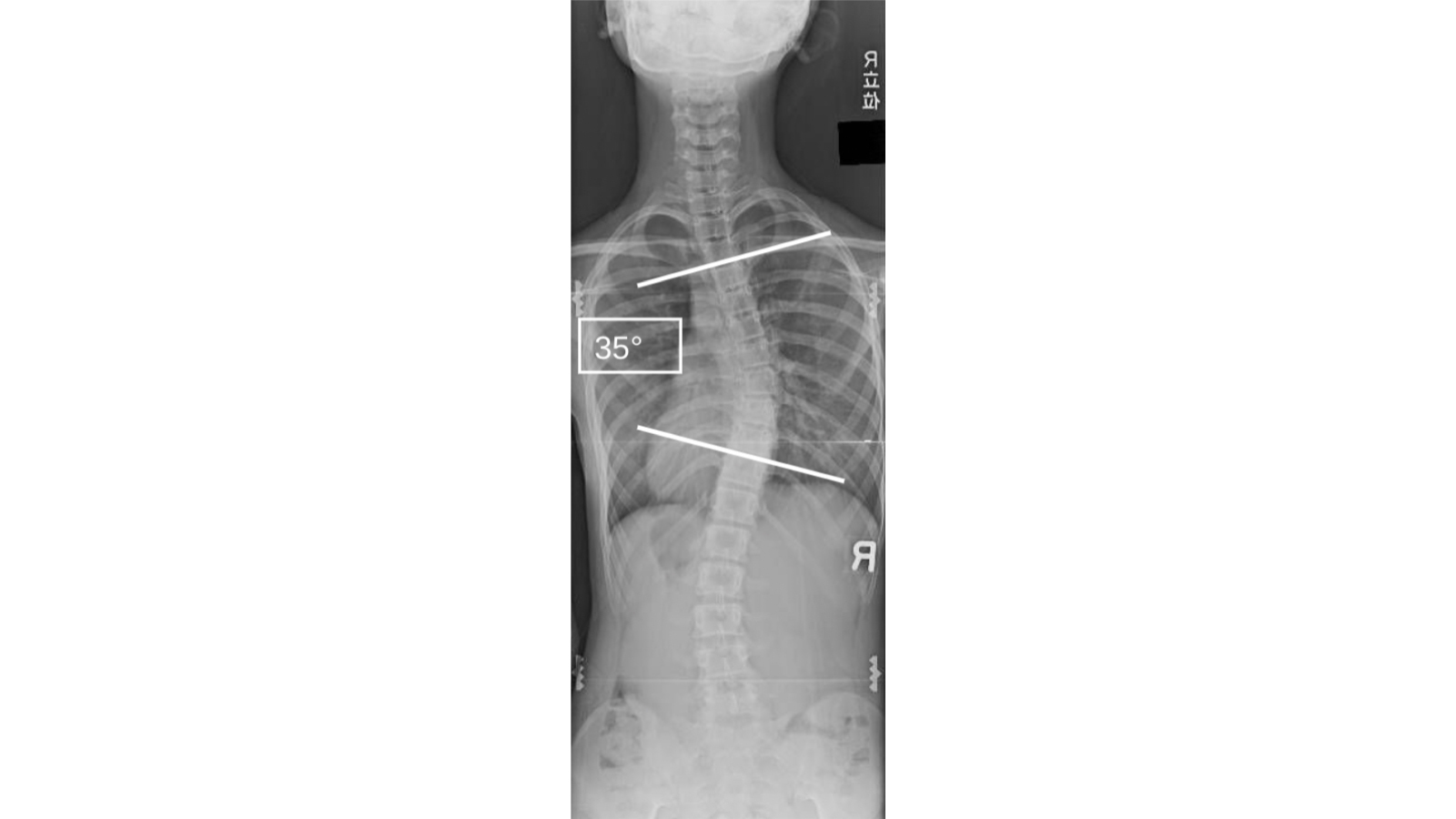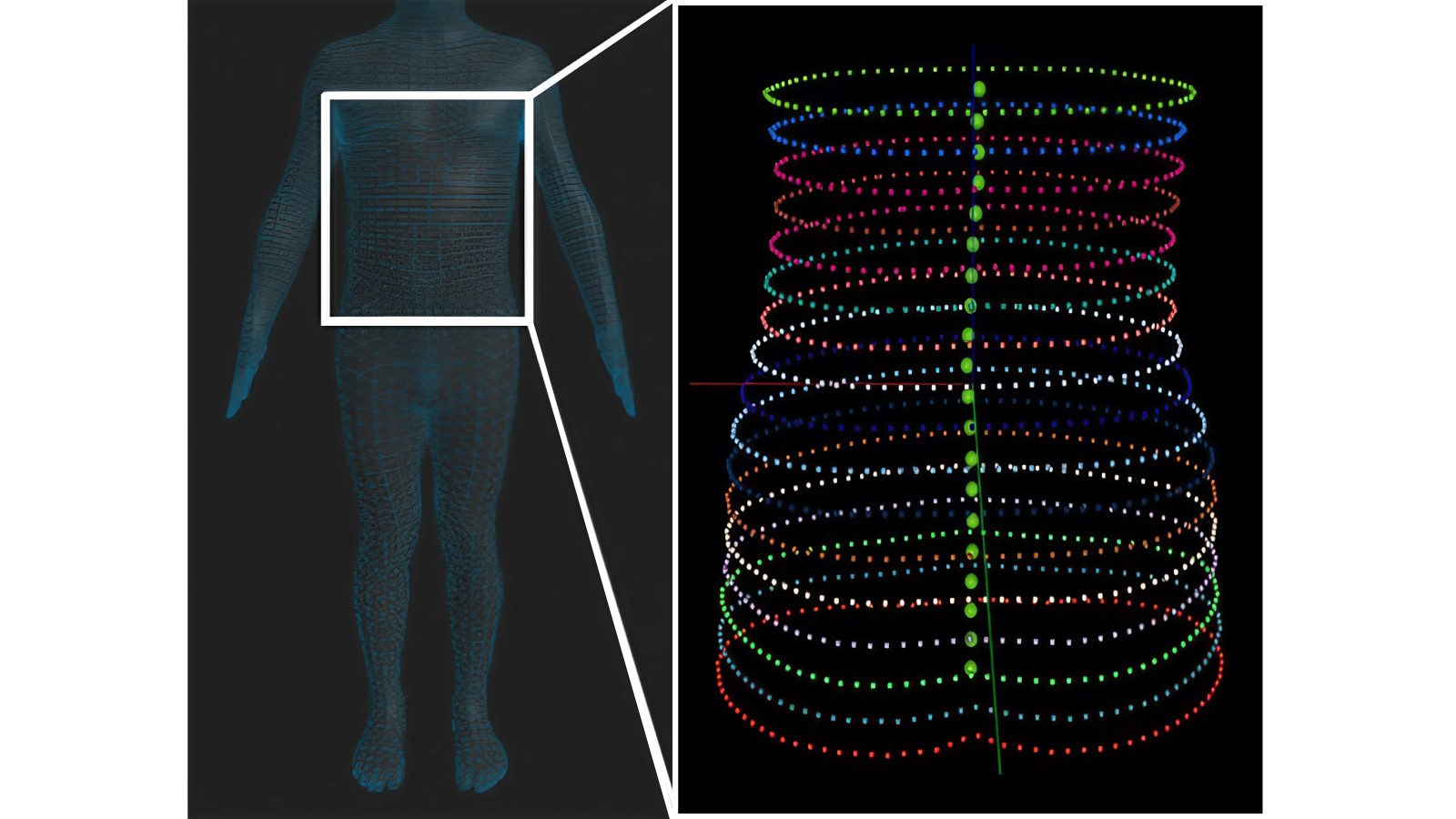
August 31, 2023
Press Release
Scoliosis Detection Using ZOZOSUIT®
――Success in detecting moderate to severe scoliosis using ZOZOSUIT®――
<Announcement outline>
◆ A study successfully detected moderate to severe scoliosis in young individuals using the ZOZOSUIT®, a 3D body measurement suit, in conjunction with a specially developed smartphone app for validation.
◆This is a groundbreaking method for detecting deformation of the body surface caused by spinal deformity.
◆This result is expected to contribute to the practical application of a new at-home self-screening tool for scoliosis.
*ZOZOSUIT is a registered trademark of ZOZO, Inc.
<Summary>
A group at The University of Tokyo (based in Bunkyo Ward, Tokyo, President: Teruo Fujii), Graduate School of Medicine, Department of Orthopaedic Surgery, Yusuke Ito (MD), Professor Sakae Tanaka, Associate Professor Yasushi Oshima, Department of Next Generation Locomotive Imaging System, Project Associate Professor Toru Doi (at the time of research), Project Research Associate Nozomu Ohtomo (at the time of research) and The University of Tokyo Hospital, Surgical Center, Lecturer Yuki Taniguchi (referred to hereon as the Research Team) and ZOZO, Inc. (headquartered in Chiba City, Chiba Prefecture, Representative Director, President & CEO: Kotaro Sawada), detected moderate to severe scoliosis(*1) in young individuals using the ZOZOSUIT®, a 3D body measurement suit, in conjunction with a specially developed smartphone app for validation (Fig. 1).
Idiopathic scoliosis, which often develops in adolescence, is included in school health examinations as it has few subjective symptoms and is difficult to notice. However, various problems have been pointed out with existing testing methods, such as sensitivity issues and their inability to identify the condition early enough for treatment. It was revealed that this new method can detect moderate to severe scoliosis with a Cobb angle (*2) of 25° or more with a sensitivity of 95.3%. It is expected that application of this method will lead to the development of a non-invasive self-screening tool, which can be used repeatedly at home, without medical supervision. Prior to publication in the American academic journal, Spine, scheduled for September 15th, 2023, the results of this research were published in the online version on August 26th.

Fig. 1:ZOZOSUIT® and scoliosis detection using a dedicated smartphone app developed for validation purposes
(Image for illustration purposes only)
<Announcement>
(1)Background of research:
Scoliosis (*1) is defined as the sideways curve or twist of the spine when viewed from the front or back, and adolescent idiopathic scoliosis describes this development during puberty and has an unknown cause (Fig. 2). Since there are few subjective symptoms, it is often unnoticed by students and their family, therefore included in health examinations at school. However, existing methods (visual inspection and Moiré topography are well-known) have sensitivity issues as well as difficulty of performing frequent examinations due to requiring an in-person medical examiner, and various problems including the inability to identify the condition at the appropriate time. On the other hand, idiopathic scoliosis is known to aggravate rapidly during the growth period, and surgery can be required when it progresses. Therefore, when the Cobb angle exceeds about 25°, depending on the stage of growth, it is necessary to start conservative therapies such as brace treatment to prevent disease progression. This underscores the need for a new screening method that can reliably detect scoliosis at the optimal time for treatment.
(2)Research content:
As a joint research project with ZOZO, Inc., the Research Team explored the possibility of detecting moderate to severe scoliosis (characterized by a Cobb angle of ≥ 25°) primarily in the younger population. They used the ZOZOSUIT®, a 3D body measurement suit, and a specifically designed smartphone app for validation. (Fig. 1). Subjects wearing the ZOZOSUIT® rotate 30° at a time, guided by the voice instructions via the app running on a smartphone placed 1.5m away. The twelve images captured are used to generate a 3D body surface model displayed in the app. In this research project, the eigenvalue Z value, which indicates the distortion of the trunk, was defined and examined from the cross-section of each level (Fig. 3) acquired and reconstructed from this 3D model. With 54 subjects in the Scoliosis group and 47 in the Non-Scoliosis group, it was found that the Moderate- and Severe-Scoliosis groups (with Cobb angle ≥ 25°) had a significantly higher Z value than the Non-Scoliosis and Mild-Scoliosis groups with Cobb angle < 25°. (Non-Scoliosis (Cobb angle ≤ 9°): mean Z value = 20.7mm, Mild- (10° ≤ Cobb angle ≤ 24°): mean Z value = 21.4mm, Moderate- (25° ≤ Cobb angle ≤ 44°): mean Z value = 32.3mm, and Severe- (Cobb angle ≥ 45°): mean Z value = 35.2mm) ROC analysis (*3) calculates the optimal cutoff value (*4) to be Z value = 19.9mm, where sensitivity is 95.3% and specificity is 58.6% for detection of moderate and higher scoliosis. This sensitivity is considered to be reasonable as a screening test, suggesting the possibility that our technology may be useful for developing a novel screening tool for detecting scoliosis.
(3)Future prospects:
From this research project, it is expected that application of this technology will lead to the development of a non-invasive self-screening tool for scoliosis in the future, which can be used repeatedly at home, without a medical supervisor. While there are still numerous challenges to overcome before this method can be practically implemented, its successful deployment could offer significant advantages. This includes the early detection of previously unnoticed scoliosis cases before they progress to severe stages, promptly directing patients to appropriate medical facilities. Moreover, reducing the number of cases that require surgical intervention is not only advantageous for patients but also presents a substantial economic benefit from a healthcare perspective.

Fig. 2:X-ray image taken from the back of a case of adolescent idiopathic scoliosis
(Female, 10s, moderate degree with Cobb angle 35°)

Fig. 3:Sectional image extracted from the 3D model generated with the app
<Presenters>
The University of Tokyo
Graduate School of Medicine
Department of Orthopaedic Surgery,
Yusuke Ito (MD)
Associate Professor: Yasushi Oshima
Professor: Sakae Tanaka
Department of Next Generation Locomotive Imaging System,
Project Associate Professor: Toru Doi (at the time of research)
Project Research Associate: Nozomu Ohtomo (at the time of research)
Faculty of Medicine,
The University of Tokyo Hospital, Surgical Center,
Lecturer: Yuki Taniguchi
<Papers>
〈Journal〉Spine
〈Title〉A novel screening method for scoliosis using a bodysuit and 3-dimensional imaging
〈Authors〉Yusuke Ito, Toru Doi, Nozomu Ohtomo, Yuki Fujii, Kengo Ono, Eri Kojima, Takayasu Yamada, Huy Hoang Tran, Francois Goffinet, Yui Endo, So Kato, Yoshitaka Matsubayashi, Sakae Tanaka, Yasushi Oshima, Yuki Taniguchi*
*Corresponding author
〈DOI〉10.1097/BRS.0000000000004658
〈URL〉https://journals.lww.com/spinejournal/fulltext/2023/09150/a_novel_screening_method_for_scoliosis_using_a.5.aspx
<Research grant>
This research was conducted as joint research funded by ZOZO, Inc.
<Glossary>
(*1)Scoliosis: a sideways twist or curvature of the spine when viewed from the front or back. Adolescent idiopathic scoliosis is that of which often develops during puberty and has an unknown cause (Fig. 2). It is known to progress during the growth period and since it is difficult to amend the curve once it has progressed by methods other than surgery, timely detection should be made to initiate necessary treatment, such as brace treatment. Surgery may be required as the curve progresses.
(*2)Cobb angle:an index of the degree of scoliosis, measured by the angle between the most tilted vertebral bodies (vertebral bones) in a standing or sitting X-ray (Fig. 2).
(*3)ROC analysis:an abbreviation for Receiver Operating Characteristic analysis. Primarily used to assess the accuracy of diagnostic or screening tests, it provides a graphical representation of the relationship between the sensitivity and specificity of a test. It can also be used to calculate the most reasonable cutoff value for the test. Sensitivity indicates the ability to correctly detect diseased people, while specificity indicates the ability to correctly detect healthy people and the higher the value, the better the test method. It can be said that a highly sensitive test method is desirable in tests such as a scoliosis screening, where failure of detection is undesirable.
(*4)Cutoff value:the value which distinguishes between positive and negative for a given test.
ZOZO, Inc.
Contact PR from here